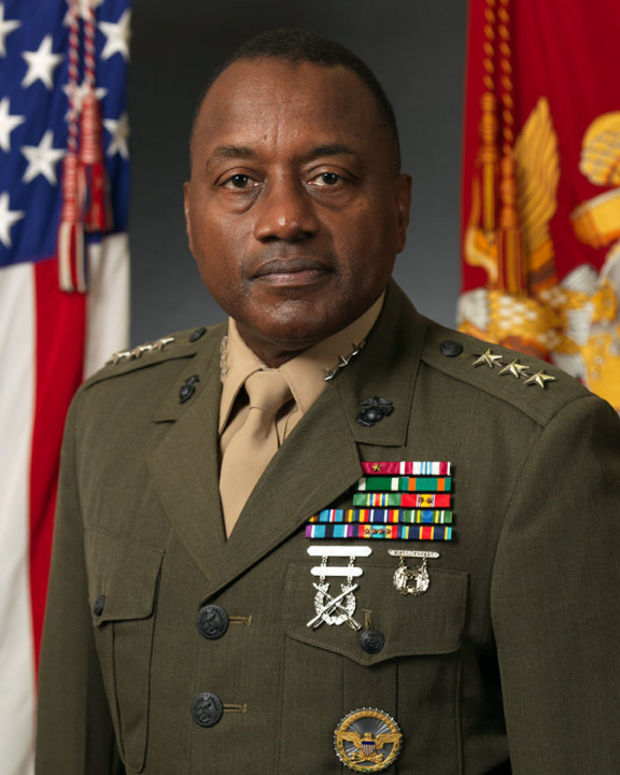
Willie Williams
ESTJCategory
Politics
Nationality
American
Occupation
General
Lieutenant General Willie J. Williams (born December 17, 1951) is a retired United States Marine Corps officer, recognized as one of the first African Americans to achieve the rank of three-star general. With nearly four decades of "distinguished service",[1] Williams held several key leadership roles, including serving as the Director of the Marine Corps Staff from 2009 to 2013. His leadership and contributions to the Marine Corps and beyond have been instrumental in shaping military and educational initiatives.[2][3][4] Additionally, he remains a significant figure in the advocacy for leadership, diversity, and educational equity through the Lt. Gen. Willie J. Williams Institute at Stillman College.[5][6][3]
MBTI Personality Profile: ESTJ
Personality Analysis
Detailed Analysis
1. MBTI Type Assessment
- Extraversion (E): Williams demonstrates strong leadership presence, frequently engaging in public speaking, military command, and advocacy work. His career in the Marines and post-retirement initiatives (e.g., the Williams Institute) highlight his outward-focused energy.
- Sensing (S): His military background emphasizes practicality, attention to detail, and adherence to structured systems—hallmarks of a Sensing preference. His focus on tangible results (e.g., policy implementation) over abstract theory aligns with this.
- Thinking (T): Decision-making is likely logic-driven, prioritizing efficiency and organizational goals. His leadership roles required objective, disciplined judgment, typical of Thinking dominants.
- Judging (J): His long-term military career and structured advocacy work reflect a preference for order, planning, and decisive action.
2. Cognitive Function Stack Analysis
- Dominant: Extraverted Thinking (Te) – Organizes systems, enforces discipline, and drives efficiency (e.g., Marine Corps leadership roles).
- Auxiliary: Introverted Sensing (Si) – Relies on past experiences, traditions, and proven methods (e.g., upholding military protocols).
- Tertiary: Extraverted Intuition (Ne) – Explores strategic possibilities (e.g., shaping educational initiatives post-retirement).
- Inferior: Introverted Feeling (Fi) – Less visible, but his advocacy for diversity hints at underlying values-driven motivations.
3. Key Personality Traits
- Decisive Leader – Commanded high-stakes military operations with authority.
- Disciplined & Structured – Thrived in the Marines’ hierarchical environment.
- Pragmatic Problem-Solver – Focused on actionable results in policy and education.
- Advocate for Equity – Championed diversity, showing a values-driven undercurrent.
- Resilient & Adaptable – Navigated barriers as an African American trailblazer.
4. Behavioral Pattern Analysis
- Commanding Presence: As a three-star general, he likely led with directness and accountability.
- System-Oriented: His roles (e.g., Director of Marine Corps Staff) required enforcing protocols.
- Community Focus: Post-retirement work emphasizes mentorship and institutional change.
5. Enneagram Type Analysis
- Type 8 (The Challenger): Assertive, protective, and driven by justice (e.g., breaking racial barriers).
- Wing 9 (Peacemaker): Balances intensity with diplomacy (e.g., collaborative advocacy work).
6. Big Five Traits
- Openness (O:70): High due to advocacy for progressive change but tempered by military pragmatism.
- Conscientiousness (C:90): Extreme discipline and reliability.
- Extraversion (E:75): Strong leadership and public engagement.
- Agreeableness (A:65): Fair but firm; prioritizes justice over harmony.
- Neuroticism (N:40): Low; resilience under pressure.
Supporting Evidence
- MBTI/ESTJ: Military leadership roles demand Te/Si (e.g., structured decision-making, tradition adherence).
- Enneagram 8w9: Combines authority (8) with coalition-building (9) in diversity initiatives.
- Big Five: High C/E scores align with his career; lower A reflects a no-nonsense leadership style.
- Behavioral: Advocacy work shows Fi/Ne development post-retirement, balancing ESTJ pragmatism with deeper values.
Supporting Evidence
Conclusion: Williams exemplifies an ESTJ 8w9 leader—pragmatic, commanding, and justice-oriented, with a legacy built on discipline and equity.
Cognitive Function Stack
Confidence: 90%The cognitive function stack represents how an individual processes information and makes decisions based on the MBTI theory.
Auxiliary Function: In
Introverted Function - Focusing on and drawing energy from internal thoughts, feelings, and reflections.
Dominant Function: Ex
Extraverted Function - Focusing on and drawing energy from the external world, people, and activities.
Inferior Function: In
Introverted Function - Focusing on and drawing energy from internal thoughts, feelings, and reflections.
Tertiary Function: Ex
Extraverted Function - Focusing on and drawing energy from the external world, people, and activities.
Enneagram Personality Profile:
Confidence: 90%8w9 (The Challenger with a Peacemaker Wing)
Big Five Personality Traits
Confidence: 90%The Big Five personality traits represent the five broad dimensions of personality that are commonly used to describe human personality.
